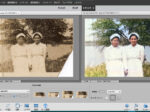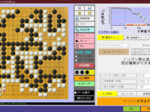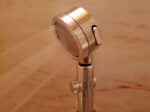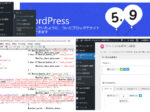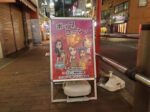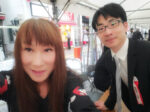 Last updated: October 18, 2023 at 2:36 PM
Last updated: October 18, 2023 at 2:36 PM
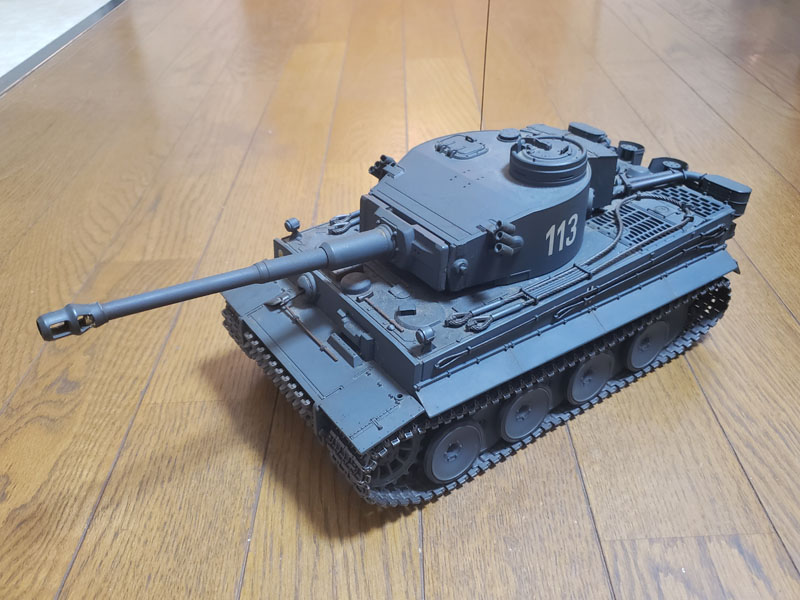
I ran the tea gar tank (initial type) of Tokyo Marui that became out of print. The Tiger is the strongest German heavy tank of its time, 100,000, which shook Allied soldiers with fear in World War II.
This RC tank was sleeping in the closet of my apartment, and it was released in October 2005 from Tokyo Marui "1/24 RC Battle Tank Tiger I (Initial Type)". I was able to fire BB bullets, so I'm still alive and well even though I'm old!
There is only one real Tiger tank that can run, and it is considered an endangered species. Among combat dealers, even old and rusty TIGER parts are difficult to get, no matter how much money they pile up.
By the way, this Tokyo Marui's teager is out of print, and the one in good condition is traded at a high price in the auction.
Please watch the figure of the teager in the following video!
1/24 RC Battle Tank Tiger I (Early Model) Videos
《Movie Part 1》
《Movie Part 2》
Package and appearance
The package of Tokyo Marui 〈RC Battle Tank Tiger I〉consists of the main body, propo, transmission and reception antenna, gun barrel (aluminum sharpening) protective cap, tank length figure, BB bullet (0.12 g /6 mm), spare caterpillar (4 frames), RC battle tank target, instruction manual.
This tiger fought a fierce tank battle with Operation Barbarossa and the Soviet medium tank T-34, in which Nazi Germany carried out a surprise attack on the Soviet Union (now Russia) at the Battle of Kursk* It has become a paint (Panzer Gray) of the Eastern Front specification that has been introduced, such as. In addition, in the Battle of the Bulge and Normandy on the Western Front, it has also been put into combat with the Allies.
It is not possible to order for end-of-sale products, but as replacement spare parts, caterpillar (for Tiger I), body spare parts A (machine gun, machine gun rack parts A/ B, hatch stopper), body spare parts B (scoop, muzzle brake, rear fender left / Right, turret spare parts A (loading hand hatch, tank length hatch), turret spare parts B (smoke discharger A/B), wheel rubber double ×8 pieces, wheel rubber thing ×8 pieces, protective cap, receiving antenna are listed. All these parts are painted.
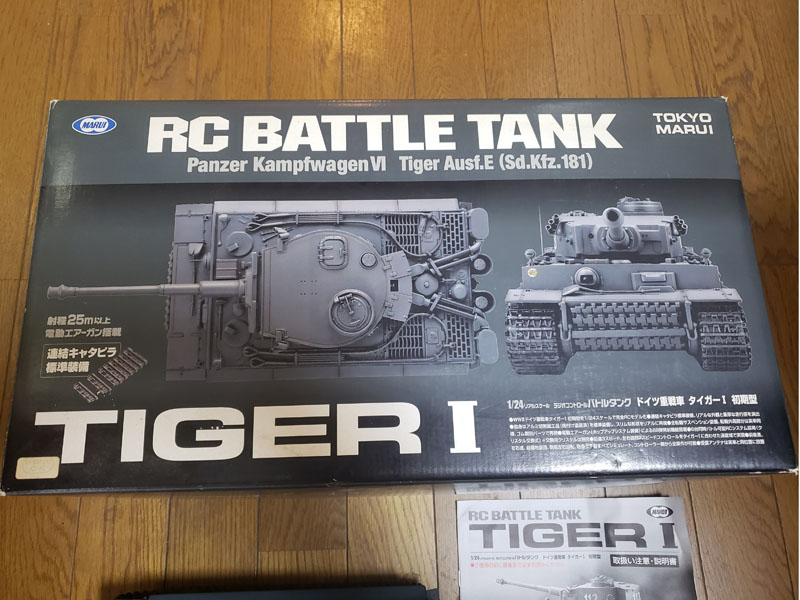
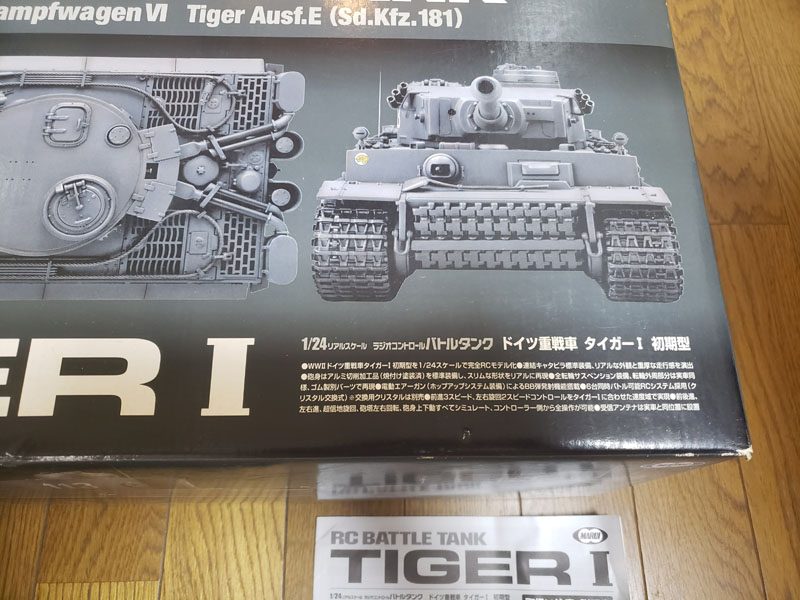
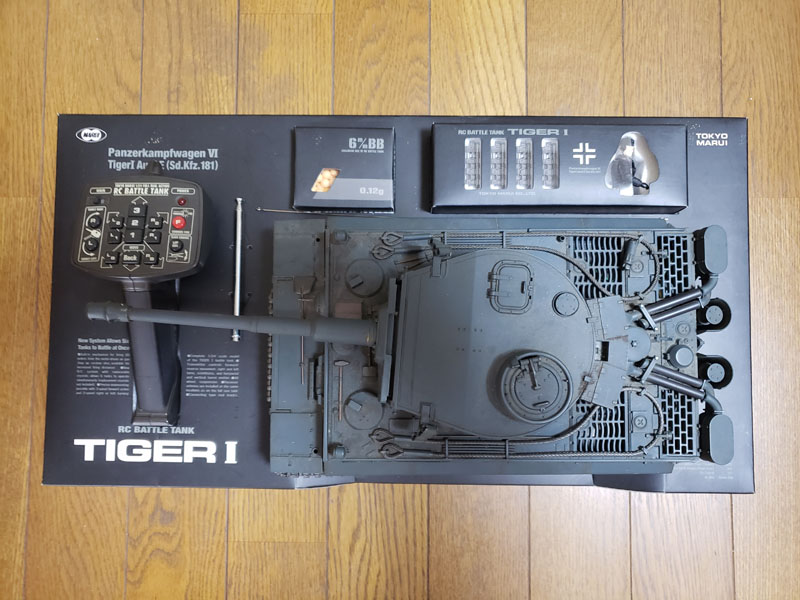
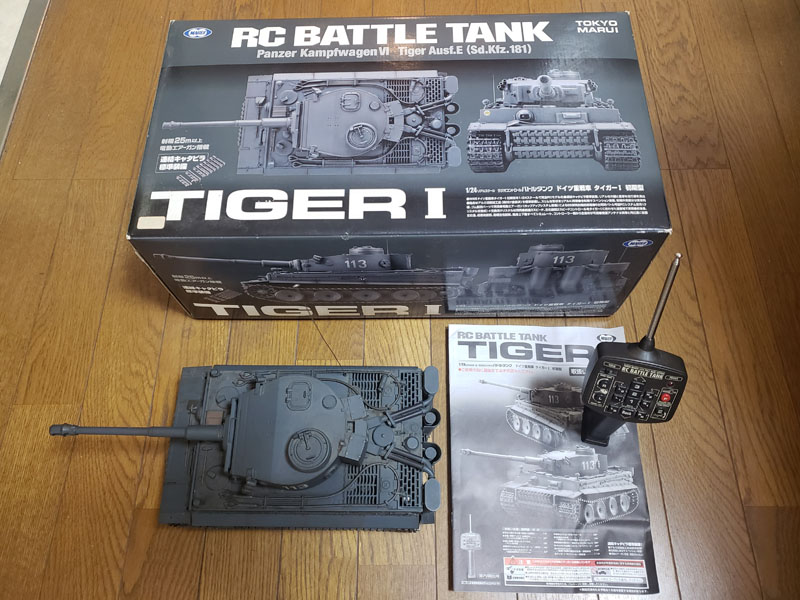
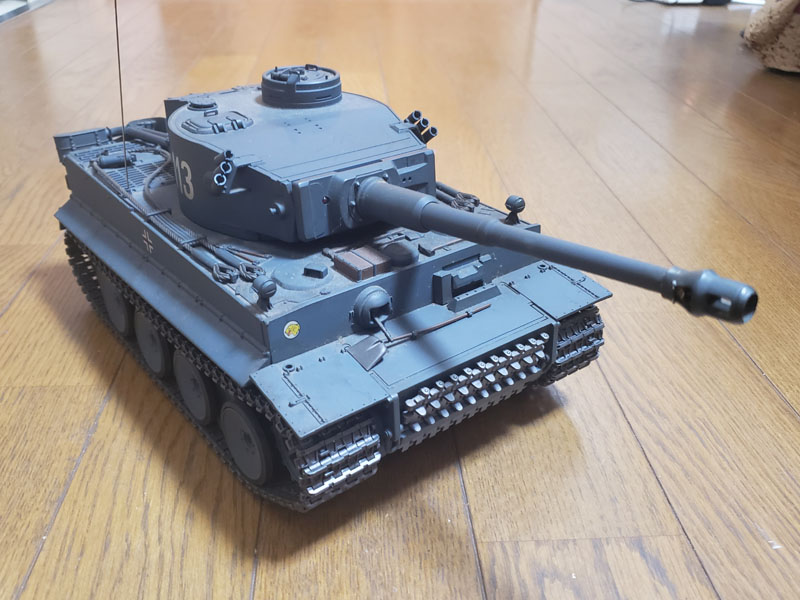
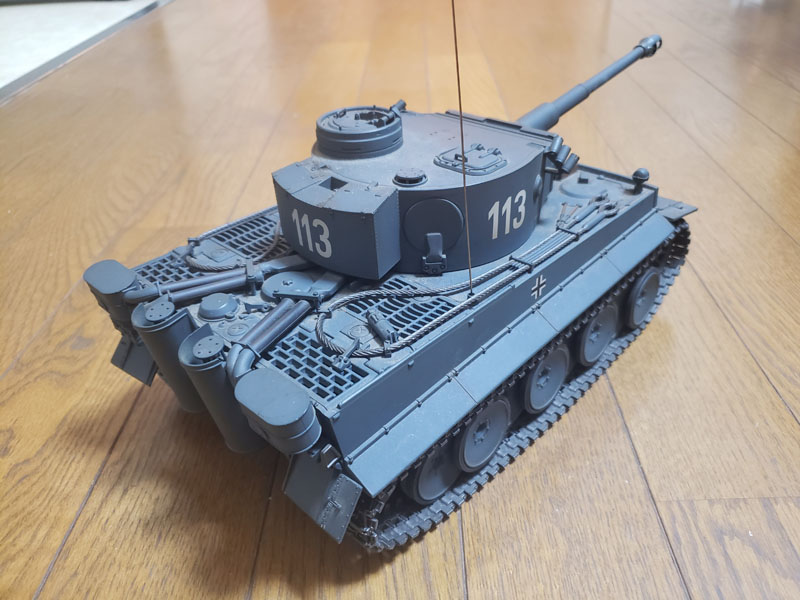
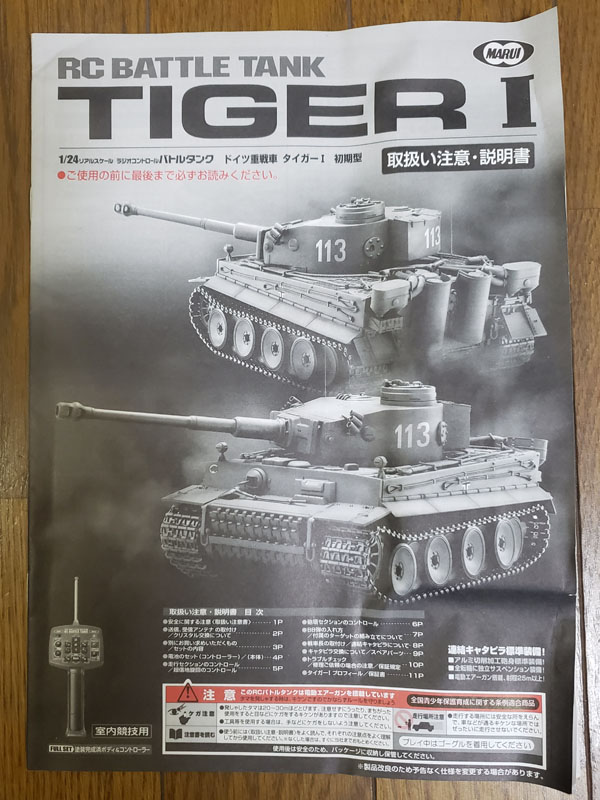
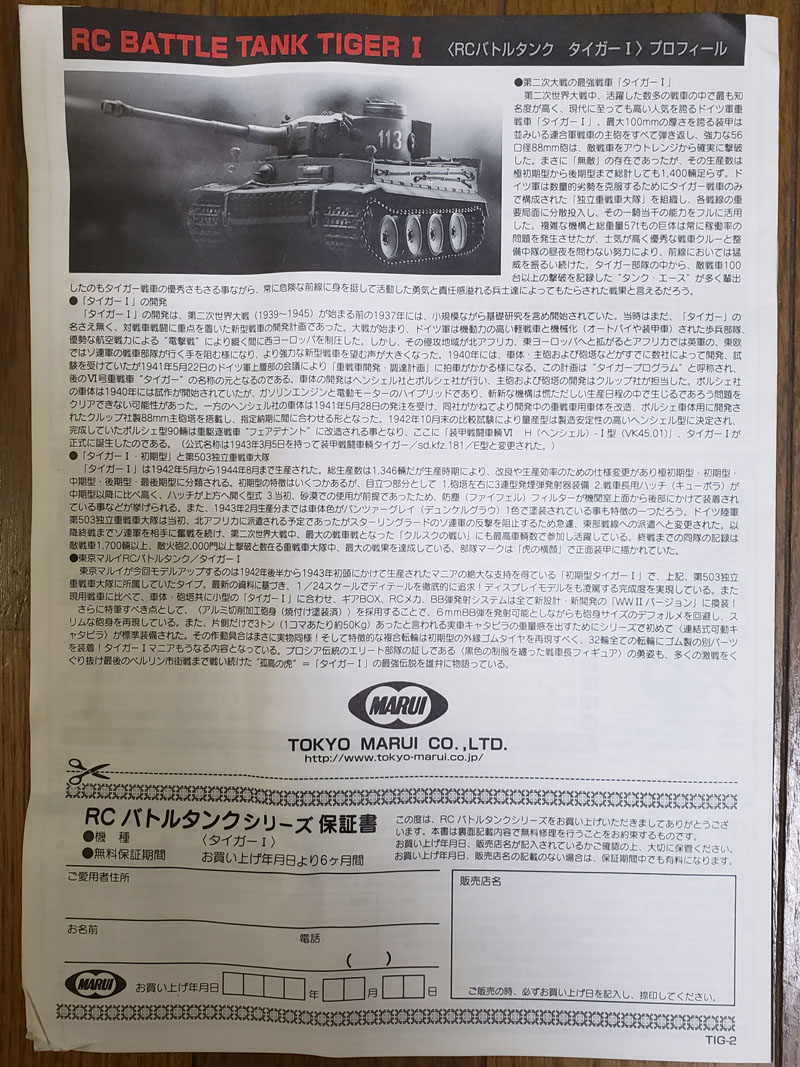
[Product specifications]
Total length: 352mm
Full width: 154mm
Turret horizontal rotation angle: 320 degrees
Turret vertical rotation angle: 20 degrees
・ Climbing ability: 35 degrees
Equipped with 6mmBB bullet firing function with electric air gun (equipped with hop-up system)
・ 6 simultaneous battle possible RC system adopted (crystal exchange type) ※ replacement crystal sold separately
Forward 3 speed, left and right turning 2 speed control
・ All operations such as forward and rear, left and right advance, super shinchi turning, turret left and right rotation, barrel vertical movement, BB bullet fire, etc. can be operated from the controller side
・ 1 006P alkaline ×, 8 AA alkaline batteries (buy separately)
Running time: Up to about 60 minutes
* For your reference, we have posted a link card to the article "Tank Soldiers", a Russian war drama depicting the Battle of Kursk. By the way, I told this drama about SKY Perfect! I watched it in! 😅
The following has been lifted:Russian War Drama Movie Tank Soldiers DVD-BOX TrailerIt is a video.
About Propo
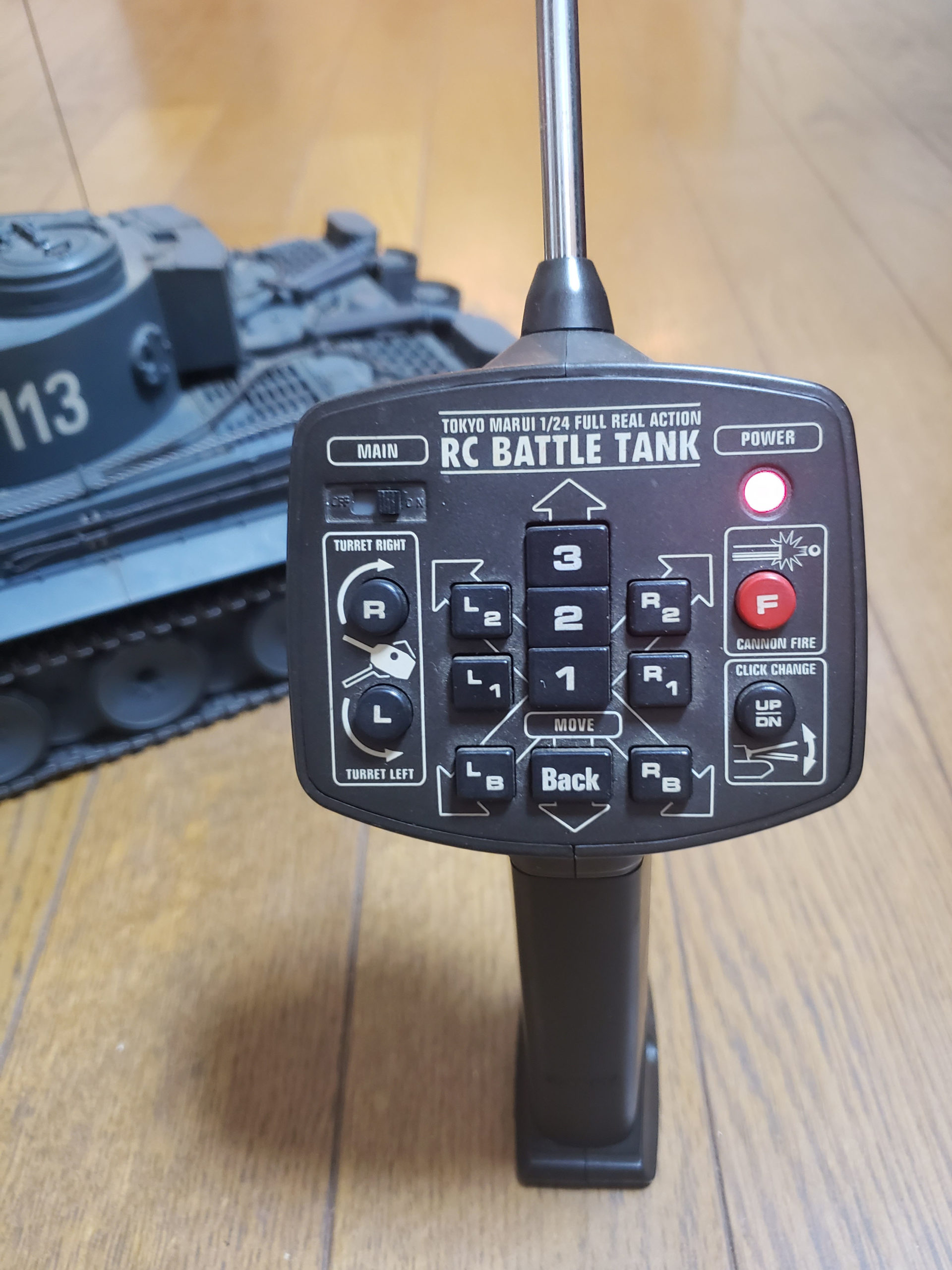
The power (controller) for Theeger I is also compatible with running on multiple vehicles at the same time. However, in that case, it is necessary to replace the crystal (1 to 6 bands) for 27 MHz on the main body side and the controller side.
Controls in the driving section include forward (1/2/3 – 1-3 speed), back, left turn (L1/L2 – 1-2), right turn (R1/R2 – 1-2 speed), and back left turn (1st to 2nd speed) LB), post-right turn (RB), left super-shin ground turn (simultaneously pressing L1/ L2 / RB - 2-speed selection is possible), right super-shin location turn (R1 / R2 / RB can be pressed simultaneously - 2-speed selection is possible) can be operated. In addition, super shinchi turning is a turning method that reverses the left and right caterpillars and changes the direction of the car body on the spot.
Controls in the turret section can control turret left rotation, turret right rotation, turret top and bottom, bb bullet fire. To fire BB bullets, press the fire button (F) on the back and front sides of the controller at the same time.
To load bb bullets, open the loading hand hatch and put in BB bullets (up to 20 rounds can be thrown). There is a launch switch (safety device) inside the hatch, and this switch must be turned on before launch. The RC battle tank is equipped with a hop-up system and can fly BB bullets up to 30 meters.
RC Battle Tank Tiger I Profile
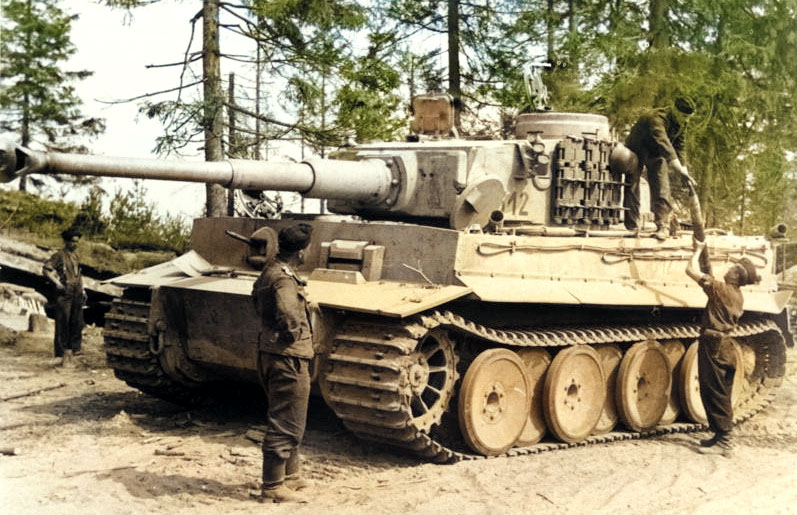
The photo is a shell loaded into Panzer VI (Tiger I) and is quoted from "Russian Federal Archives Image 101I-461-0213-34" posted on Wikipedia. In addition, this photograph was originally a monochrome photograph by Photoshop Elements 2021, it is the one that repaired the damaged place in, and colored it with AI.
This tigger is said to have been taken on the Eastern Front, but for painting, it seems to be a specification of the North African Front once led by Adm. Elvin Rommel.
The following is a text conversion of the image of "RC Battle Tank Tiger I Profile" on the back cover of tokyo marui's instruction manual.
- Tanks of World War II [Tiger I]
During World War II, the German heavy tank "Tiger I" is well-known among the many tanks that were active, and is highly popular even today.
With armor up to 100 mm thick, it bounced back all the main guns of allied tanks, and the powerful 56.88mm gun reliably destroyed the enemy tank from the outrange. Already it was the existence of "invincible", the number of production was less than 1,400 tanks even if it totaled from the very early type to the late type, and the German army organized a "independent heavy tank battalion" composed only of Tigers to overcome the quantity inferiority, dispersed it to the critical phase of each front, and made full use of its one-thousand capacity. The complex mechanics and 57-ton total weight of the giant always caused occupancy issues, but the morale-boosting and excellent tank crew and the day-night efforts of the maintenance squadron continued to rag on the front lines. Among the Tiger troops, many "tank aces" describing the elimination of more than 100 enemy tanks were produced, not only the excellence of the Tiger, but also the results of the battle brought by the soldiers who always worked on the dangerous front line.
- Development of [Tiger I]
Development of Tiger I began in 1937, before the beginning of World War II (1939-1945), including basic research on a small scale. At that time, there was not even the name of "Tiger" yet, and it was a development plan of a new tank which focused on anti-tank combat. The War began, and the Germans quickly conquered Western Europe with highly mobile light tanks, mechanized infantry units (motorcycles and armored vehicles), and "blitzes" with superior air power. However, as the invasion area spread to North Africa and Eastern Europe, british tanks in Africa and Soviet tank units in Eastern Europe began to block their way, and there was a strong desire for more powerful new tanks. In 1940, the car body, main gun, turret, etc. had already been developed and tested by several companies, but the meeting of the Upper German Army on May 22, 1941 spurred the "heavy tank development and procurement plan". This project is called the "Tiger Program" and is the name of the later "Tiger". Henschel and Porsche were in charge of the inter-engine of the car body, and Krupp was in charge of the development of the main gun and turret. Porsche's car body was prototyped in 1940, but it was a hybrid of a gasoline engine and an electric motor, and the novel mechanism may not be able to clear the problems that will arise in the hectic production schedule. On the other hand, the henschel car body received an order on May 28, 1941, remodeled the body for heavy tanks that the company has been developing for a long time, equipped with a Krupp 88mm main turret developed for Porsche car body, it became a form to meet the specified delivery date. By comparative test at the end of October 1942, the mass production type was decided to the Henschel type with high manufacturing stability, and the Porsche type 90 tanks that had been completed were remodeled into heavy tank destroyer "Fairenant", and here [armored combat vehicle VI. H (Henschel) -I type (VK45.01)], Tiger I was officially born. (The official name was changed to armored combat vehicle Tiger/sd.kfz.181/E type with March 5, 1943.) )
- [Tiger I. initial type] and the 503rd independent heavy tank battalion
The Tiger I was produced from May 1942 to August 1944. The total production number is 1,346 tanks, but depending on the production time, there are specification changes for improvement and production efficiency, and it is classified into very early type, initial type, medium type, late type, and last stage type. There are several features of the initial type, but as a prominent part 1. Three-type smoke shot launcher equipment on the left and right of the turret 2. The hatch for tank commanders (cupola) is higher than the medium-term type and the hatch opens up 3. Initially, because it was premised on use in the desert, a dustproof (Feifel) filter is attached from the upper surface of the engine room to the rear. In addition, until February 1943 production, the body color is painted in panzer gray (Dunkirgrau) one color. The German Army's 503rd Independent Heavy Tank Battalion was originally scheduled to be sent to North Africa, but was hastily changed to the Eastern Front to stop the Soviet counterattack in Stalingrad. Since then, he has continued to fight against the Soviet army until the end of the war, and during World War II, he participated in the Battle of Kursk, which became the largest tank battle, with the highest number of vehicles. The company's record until the end of the war is the largest among the many heavy tank battalions, with more than 1,700 enemy tanks and more than 2,000 enemy artillery destroyed. The troop mark was drawn on the front armor with the "tiger's side face".
- Tokyo Marui RC Battle Tank / Tiger I.
Tokyo Marui is modeled up this time in the "early type Tiger I", which has gained the great support of maniacs produced in late 1942 and early 1943, the above type that belonged to the 503rd Independent Heavy Tank Battalion. Based on the latest materials, thoroughly pursue the details in 1/24 scale! It achieves a degree of perfection that surpasses even the display model. In addition, compared to the working tank, in line with the small [Tiger I] in both the car body and turret, gear BOX, RC mechanism, BB bullet firing system are all replaced with the newly designed and newly developed [WWII. version]! Furthermore, as a noteworthy point, by adopting [aluminum cutting gun barrel (burned painted)], while being able to fire 6 mmBB bullets, avoiding deformance of the barrel size, reproduce the slim barrel. In addition, for the first time in the series , [connectable movable caterpillar ] was equipped as standard to create a sense of weight of the actual car caterpillar that is said to have had 3 tons (about 50 Kg per frame) on only one side. The working shellfish combination is exactly the same as the real thing! And the characteristic composite rolling wheel is attached another part made of rubber to all 32 wheels in order to reproduce the initial outer edge rubber tire! Tiger I. Mania has become a content that becomes another content. The brave figure of the tank commander figure in a black uniform, a testament to the elite forces of Prussi's tradition, also eloquently tells the strongest legend of the "Solitary Tiger" = "Tiger I", which passed through many fierce battles and continued to fight until the last berlin city battle.
MARUI
TOKYO MARUI CO.,LTD.
http://www.tokyo-marui.co.jp/
Legendary Tank Ace Captain Michael Wittmann SS
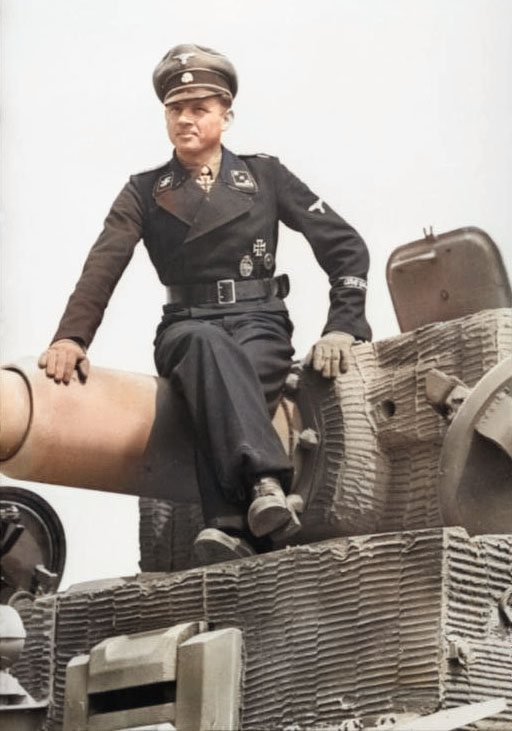
Propaganda photo by Propaganda Squadron (PK) (May 1944) *Source: Wikipedia
Michael Wittmann is the most famous tank soldier in the tank ace mentioned above.
His body is now buried in the German War Dead Cemetery in La Kamp in the Normandy region. In addition, this photograph was originally a monochrome photograph by Photoshop Elements 2021, it is a colorized version with AI.
Below is a quote from Wikipedia.
Michael Wittmann (April 22, 1914 – August 8, 1944) was a member of the SS of the German Third Reich during World War II. He was a tank soldier who belonged to the 1st SS Armored Division Of the WynS Leipstandarte SS Adolf Hitler (LSSAH), and the final class was Captain SS.
The number of destroyed tanks is 138 tanks, 132 anti-tank guns. He is one of the tank soldiers who destroyed the largest number of enemy tanks. Especially on the Normandy front, the battle of Vilelle Bokage, in which he was a single-horseman and devastated a British tank unit, is famous.
* Source: Michael Wittmann (Wikipedia)
About the existing running Tiger
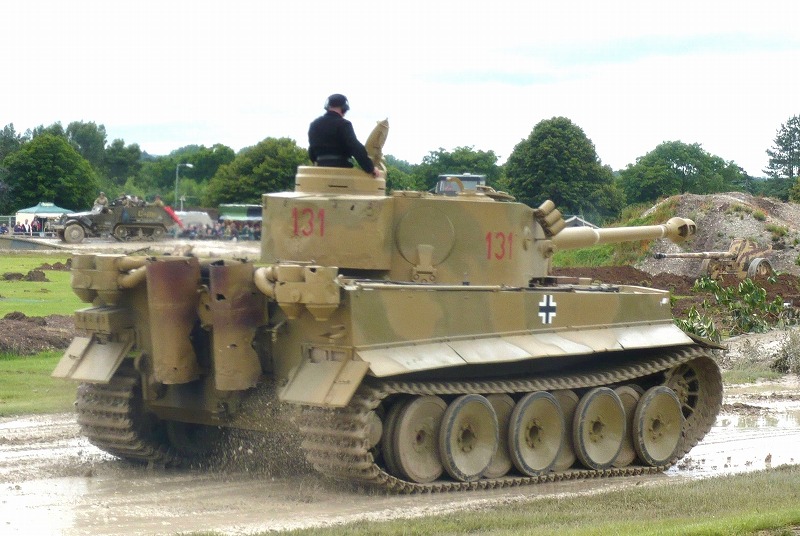
There are only seven existing tigers in the world, including each one that is poorly preserved, and the only one that can run tiger I (Tiger 131) is preserved and exhibited at the Bobbington Tank Museum in England.
The photo is of Tiger I (Tiger 131). This vehicle is also known for playing a battle scene in the movie "Fury" starring Brad Pitt.
Below is the running video.

